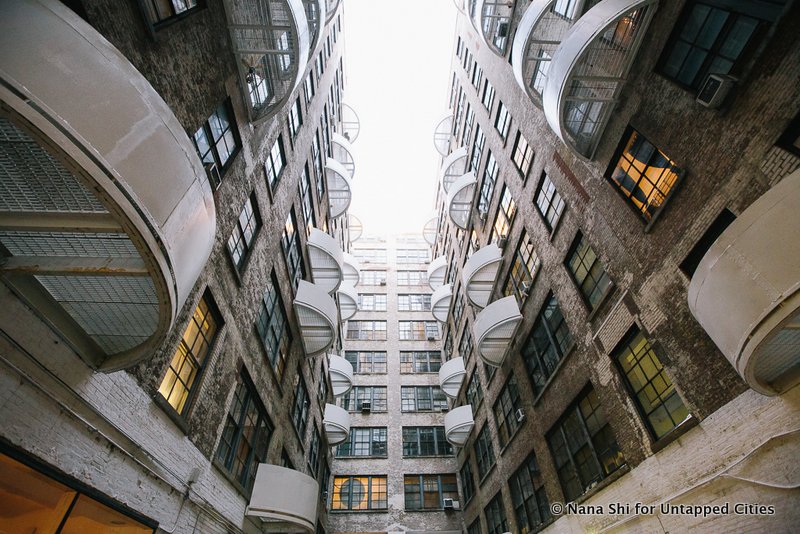9. Bell Laboratories | Westbeth Artists’ Housing

The 13-building complex on the corner of Bethune Street and Washington Street has been a hub of technological and artistic innovation since the 1800s. The oldest building in the complex, which dates back to 1861, was originally a wood planing mill. After also serving as a box factory, lofts, and stores, it became the starting point of a sprawling facility for the Western Electric Company in 1897. As Western Electric merged with Bell Laboratories in 1925, the complex continued to grow and, for a time, it was the largest industrial research center in the United States. It was at this massive laboratory that many technological breakthroughs were made such as the first TV broadcast, the first demonstration of a binary computer, the invention of the condenser microphone, and the development of technologies like the transistor, the silicon solar cell, transoceanic telephone cable and lasers.
By 1966, Bell Labs had outgrown the Bethune Street facility and city noise made certain experiments impossible. When Bell moved operations to New Jersey, the future of the historic West Village compound was unknown. The site remained empty until 1968 when, with the help of funding from the J. M. Kaplan Foundation and the National Endowment for the Arts, construction began on a renovation project that would turn the former research facility into 384 live-work spaces for artists and their families. The project was designed by architect Richard Meier under the direction of developer Dixon Bain. In 1970, after two years of renovation work, Westbeth Artists’ Housing opened its doors. Westbeth was added to the National Registrar of Historic Places on December 8, 2009 and designated as a New York City Landmark on October 25, 2011 by the New York City Landmark Preservation Commission. The transformation of Bell Labs into Westbeth Artist’s Housing is one of the first success stories of adaptive reuse in New York City.
Westbeth still serves as a residence and haven for Manhattan artists. In addition to residential spaces, it also boasts commercial, performance and rehearsal spaces as well as individual and communal artists studios. Additionally, it’s home to a number of major cultural organizations including the New School for Drama, The Martha Graham Center of Contemporary Dance, and Congregation Beth Simchat Torah, the first LGBT synagogue in New York. Read more about Westbeth Artist Housing here.





